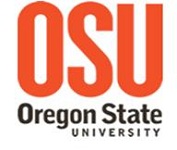- Dr. Stacey Harper received a five-year, $3.3 million award from the National Science Foundation to study the risks of micro- and nanoplastics to aquatic organisms in the pacific northwest.
- Dr. Stacey Harper received a five-year, $1.9 million award as an Outstanding New Environmental Scientist (ONES) from the National Institute of Environmental Health Sciences (NIEHS) and was selected as 2013 recipient of the L.L. Stewart Faculty Scholars Award which recognizes an outstanding faculty members at Oregon State University.
You are here
Monoalkyl Tin Nano-Cluster Films Reveal a Low Environmental Impact under Simulated Natural Conditions.
| Title | Monoalkyl Tin Nano-Cluster Films Reveal a Low Environmental Impact under Simulated Natural Conditions. |
| Publication Type | Journal Article |
| Year of Publication | 2019 |
| Authors | Wu F, Harper BJ, Marsh DA, Saha S, Diulus T, Amador JM, Keszler DA, Herman GS, Maddux BLS, Harper SL |
| Journal | Environ Toxicol Chem |
| Volume | 38 |
| Issue | 12 |
| Pagination | 2651-2658 |
| Date Published | 2019 12 |
| ISSN | 1552-8618 |
| Keywords | Animals, Chlamydomonas, Daphnia, Oxides, Tin, Water Pollutants, Chemical |
| Abstract | Recently, monoalkyl oxo-hydroxo tin clusters have emerged as a new class of metal-oxide resist to support the semiconductor industry's transition to extreme ultraviolet (EUV) lithography. Under EUV exposure, these tin-based clusters exhibit higher performance and wider process windows than conventional polymer materials. A promising new monoalkyl precursor, [(BuSn) O (OH) ][OH] (BuSn), is still in its infancy in terms of film formation. However, understanding potential environmental effects could significantly affect future development as a commercial product. We synthesized and explored the toxicity of nano-BuSn in the alga Chlamydomonas reinhardtii and the crustacean Daphnia magna at exposure concentrations ranging from 0 to 250 mg/L. Nano-BuSn had no effect on C. reinhardtii growth rate irrespective of concentration, whereas high nanoparticle concentrations (≥100 mg/L) increased D. magna immobilization and mortality significantly. To simulate an end-of-life disposal and leachate contamination, BuSn-coated film wafers were incubated in water at various pH values and temperatures for 14 and 90 d to investigate leaching rates and subsequent toxicity of the leachates. Although small quantities of tin (1.1-3.4% of deposited mass) leached from the wafers, it was insufficient to elicit a toxic response regardless of pH, incubation time, or temperature. The low toxicity of the tin-based thin films suggests that they can be an environmentally friendly addition to the material sets useful for semiconductor manufacturing. Environ Toxicol Chem 2019;38:2651-2658. © 2019 SETAC. |
| DOI | 10.1002/etc.4580 |
| Alternate Journal | Environ Toxicol Chem |
| PubMed ID | 31441966 |
Theme by Danetsoft and Danang Probo Sayekti inspired by Maksimer
